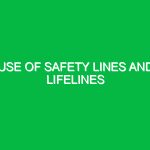Introduction
Skylight and roof opening protection plays a critical role in the domain of health, safety, and environment (HSE). These features are often seen in home designs QLD, and allow natural light to illuminate interior spaces while also presenting unique safety challenges. Ensuring the safety of workers and occupants is paramount, particularly in industries involving construction, maintenance, and facility management. Proper skylight and roof opening protection not only mitigates risks but also complies with regulatory standards, enhancing overall workplace safety.
Understanding Skylight and Roof Openings
Skylights are architectural features designed to admit natural light into a building. They can be fixed or operable and are commonly found in commercial, industrial, and residential structures. Roof openings, on the other hand, include access points for maintenance or installation purposes, such as hatches or vents. Both features, while beneficial, can pose significant hazards if not adequately protected.
Identifying Hazards and Risks
When it comes to skylights and roof openings, several hazards can lead to accidents and injuries. Here are some potential risks to consider:
1. Falls from Heights
One of the most significant hazards associated with unprotected skylights and roof openings is the risk of falls. According to the Occupational Safety and Health Administration (OSHA), falls are one of the leading causes of workplace fatalities. Inadequate protection around skylights can result in workers falling through these openings, leading to severe injuries or even death.
2. Falling Objects
Skylights can also pose a risk to individuals below. If a skylight is not properly secured, materials or tools can accidentally fall through, endangering those working or walking underneath. This risk is particularly relevant in busy construction sites where multiple activities occur simultaneously.
3. Weather-Related Hazards
Extreme weather conditions can exacerbate the dangers associated with skylights and roof openings. For instance, rain or snow accumulation can create slippery surfaces, increasing the risk of slips, trips, and falls. Moreover, high winds can dislodge unsecured materials or equipment, posing additional hazards.
4. Inadequate Visibility
Poorly designed or installed skylights may lead to inadequate visibility, especially during nighttime or adverse weather conditions. This lack of visibility can result in accidents as workers navigate around these potentially hazardous areas without proper awareness of their surroundings.
Safety Precautions and Best Practices
Understanding the risks associated with skylights and roof openings is only the beginning. Implementing robust safety precautions and best practices is essential in mitigating these hazards. Here are several actionable strategies to improve safety:
1. Install Protective Barriers
One of the most effective ways to prevent falls is to install guardrails or other protective barriers around skylights and roof openings. These barriers should meet regulatory standards and be designed to withstand potential impacts. It is essential to ensure that they are installed correctly and regularly inspected for integrity.
2. Use Warning Signs and Markings
Clear signage indicating the presence of skylights and roof openings can help raise awareness among workers. Use bright colors and reflective materials to ensure visibility. Additionally, consider using floor markings to delineate hazard zones around these areas.
3. Provide Training and Education
Training is a critical component of safety. Workers should be educated about the risks associated with skylights and roof openings, as well as the importance of adhering to safety protocols. Regular safety meetings can reinforce these lessons and keep safety top of mind.
4. Conduct Regular Inspections
Regular inspections of skylights and roof openings are essential to ensure that protective measures remain effective. This includes checking guardrails, signage, and the condition of the skylights themselves. Any issues should be addressed promptly to minimize risks.
5. Utilize Personal Protective Equipment (PPE)
Depending on the work environment, personal protective equipment (PPE) such as harnesses, helmets, and non-slip footwear may be necessary. Employers should provide appropriate PPE and ensure that workers are trained in its proper use.
Regulatory Standards and Compliance
Skylight and roof opening protection are governed by various regulations and standards aimed at ensuring workplace safety. Understanding these regulations is crucial for compliance. Here are some key standards to consider:
1. OSHA Regulations
The Occupational Safety and Health Administration (OSHA) has established regulations concerning fall protection. According to OSHA’s standards, employers must provide fall protection for workers exposed to fall hazards, including those working near skylights. Specific requirements can be found in OSHA’s General Industry Standards (29 CFR 1910) and Construction Standards (29 CFR 1926).
2. ANSI Standards
The American National Standards Institute (ANSI) also provides guidelines for skylight safety. ANSI/ASSE Z359.1 outlines requirements for fall protection systems, emphasizing the importance of properly designed and maintained safety measures.
3. Local Building Codes
In addition to federal regulations, local building codes may impose additional requirements related to skylight and roof opening protection. It is essential to consult local authorities to ensure compliance with all applicable codes.
Conclusion
Skylight and roof opening protection is not just a regulatory requirement; it is a vital aspect of ensuring the health and safety of workers and building occupants. By recognizing the potential hazards associated with these architectural features and implementing effective safety measures, organizations can create a safer working environment. Regular training, inspections, and adherence to regulations are key components in this ongoing effort. Ultimately, prioritizing skylight and roof opening protection reflects a commitment to workplace safety that benefits everyone involved.


